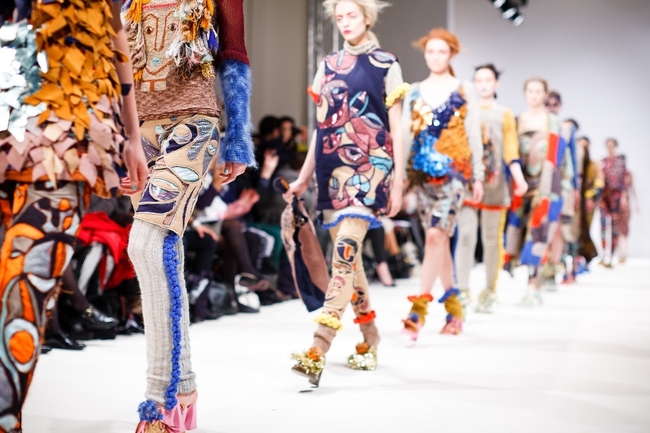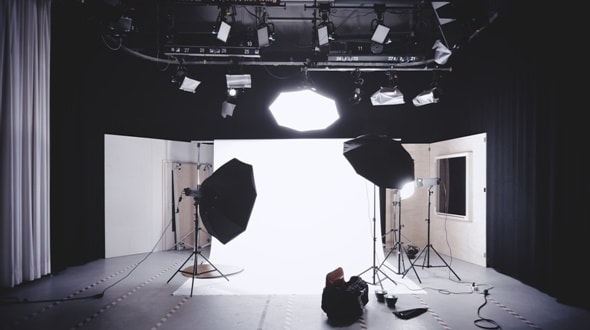When people think of modeling, they usually think of runway shows or models represented in glossy fashion magazines. The fashion industry employs the highest number of models. Modeling as an occupation began in the year 1853. The credit goes to French designer, Charles Frederick Worth, known as the father of Haute couture, who asked his wife, Marie Augustine Vernet to model for the clothes he designed. Before that, clothes were showcased on mannequins.
With the boom in the fashion industry and the advent of fashion photography, the scope for modeling increased. Lisa Fonssagrives is said to be the first model who gained popularity appearing in more than 200 editions of Vogue. Vogue became a top player in the fashion industry, creating opportunities for many upcoming models. However, it was not until the 1960s that modeling found the right gear. Modeling agencies sprung up, and agents became the middlemen. As of 2010, the USA modeling and talent industry is worth a whopping 5 billion dollars.
Let us look at the different types of Models in the Fashion World:
- Fashion (Editorial) Model
- Fashion (Catalog) Model
- Commercial Model
- Mature Model
- Promotional Model
- Parts Model
- Fit Model
- Fitness Model
- Glamour Model and more
Modeling has become a part of global popular culture, and the models who walk the runway have gained prominence. There is talk of diverse representation of models in the fashion industry, in terms of gender, ethnicity, and age of models.
Modeling is one of those exclusive professions that lends itself to implementing your creative skills in diverse ways.
As a model, you can be ingenious and explore the different areas of the fashion industry. Some models experiment with one specialized category, while others try out multiple types of modeling to find the genre that best suits them. If you are looking to pursue a career in modeling, you need to be sure about the area, which is the best fit for you.

Let us look at the different types of Models in the Fashion World
Fashion (Editorial) Model
Fashion models are also called editorial models. Editorial or 'print' modeling refers to storytelling through pictures. It includes showcasing designers, current fashion or beauty trends, the latest in makeup, hair, skin-care, etc. that are illustrated through a pictorial story. These editorials are highly coveted as they set the current trends in the industry. Fashion models usually grace the covers of international fashion magazines like Elle, Glamour, and Vogue, and are employed by major fashion houses.
The standard height requirement for a female fashion model is 5 feet and 9 inches to 6 feet. For men, the required height is 5 feet and 11 inches to 6 feet and 3 inches. You might have heard of top fashion models, Kendall Jenner, Gigi Hadid, and Karlie Kloss. To add to this list, some of the other famous fashion models are Chrissy Teigen, Naomi Campbell, Kate Moss, and Miranda Kerr. These type of models need to follow a rather strict lifestyle regime. Diet and fitness are two areas that demand specific attention. Along with that, professionalism and an ambitious outlook are necessary.
Fashion (Catalog) Model
With the internet boom, catalog models are in demand, more than ever before. They set new fashion trends in Print catalogs and are also taking over the digital world by storm. Catalog models are required to look more like real people, to catch the attention of the client's diverse audience. Their purpose is to attract customers to purchase products or avail their services, using catchy visuals and well-written content. So they don’t really adhere to the stringent requirements of fashion models. However, they do need to have a striking personality, the right attitude, healthy skin and hair, and a million-watt smile. Depending on the catalog, the client sets his/ her requirement for short, tall, young, old, thin or plus-size models of diverse ethnicities.
Also Read: Best Fitness Websites To Inspire You
Commercial Model
Commercial models can don different hats according to the demands of the clients. They can be of any age, size, shape, and height as their work vary from advertising for a particular product to marketing for a particular service, or promotional events for housewares, food, travel, cosmetics, etc. Commercial models work in the print, digital, retail and television industry. Their job is to fit into retail clothing or to successfully be able to endorse a product or service. Accordingly, to the industry's standard sample size, commercial models are hired if they are between 5'6" to 5'11" in the case of females and males are required to be between 5'9" to 6'2". The type of model requirements and preferences change according to the clients.

Mature Model
It is never too late to start working as a professional mature model. More than experience, it is important that you are comfortable behind the frame, exude grace and a warm personality and have a professional attitude. A mature model is generally above 35- 40 years of age and is healthy and physically fit. Greys, wrinkles or age spots are not a concern for a mature model. Several high-end fashion magazines, major fashion houses, and high streetwear brands are opening up to the idea of using models of different ages for their campaigns and catalogs. There are also assignments in the health, pharmaceutical, and editorial areas. Daphne Selfe, Frances Dunscombe, Charles Schumann have proved age is just a number and it is never too late to make it big in the fashion world.

Promotional Model
Promotional models are also known as promo models or brand ambassadors. They generally work on assignments by consumer-driven brands. They are part of promotional events, trade shows, digital launches, live shows, and conventions. They must be extroverted and highly interactive as a major part of their job is to drive consumer demand for a specific product or service, by directly interacting with potential customers. This is a popular form of brand advertising or marketing. Besides being conventionally attractive, a promotional model should be articulate, smart, clearly understand the client's requirement and have in-depth knowledge about the product. The more work that a promotional model does, the more are his or her chances of being able to find jobs and be noticed by professionals and industry insiders.
Parts Model
A Parts Model specializes in modeling for specific parts of the body such as hand, leg, feet, facial features. A parts model works on editorial, advertising, and catalog work. This type of modeling is focused on very specific visual requirements. For instance, for a jewelry brand endorsement, the model is required to have flawless, smooth even-toned skin, with well-trimmed and shaped nails.

Fit Model
Fit Models work with fashion designers and manufacturers to make sure that each garment has the ideal sizing, drape, fit and movement. Since garment and fashion industries cater to a wider audience, their samples are made considering a variety of shapes and sizes in mind. Their products cannot be shipped without checking the size of their garments. That is where the role of a fit model comes into play. Fit models need not have the editorial and runway figures printed in magazines but their job requires them to be well-toned and maintain consistent body weight, whether petite or plus-sized. With ideal size 6 or 8 physiques, fit models play a very important role in how the clothes we buy actually fit.
Fitness Model
Fitness modeling is a highly competitive industry that takes hard work, determination, and dedication. Most fitness models are health enthusiasts. More often than not, fitness models have an athletic background. They maintain a healthy lifestyle, eat clean and radiate positive energy. These models can take on a wide range of roles owing to their versatility. There is a huge demand for fitness models in athletic wear and fitness companies, as well as supplement and commercial manufacturers. Learn how to enter the world of fitness models with our guide

Glamour Model
The word 'glamour' means an attractive or exciting quality that makes certain people or things seem appealing. Glamour modeling is a type of modeling which focuses on a model's appearance or presentation. Glamour modeling is normally intended for commercial use, so images are used in magazines, posters, calendars, and advertisements for beauty and health products. Glamour models need to be a minimum of 18 years of age. Their bodies and appearance need to strictly meet agency standards. The right location can add visual appeal to your glamour photo shoot. So it is important to learn how to choose the right locations that suit your theme, complement your outfit, makeup and blends with your photographer's style.
Swimsuit and Lingerie Model
Swimsuits and lingerie models are often confused with glamour models, but they are not the same. As the name suggests, swimsuits and lingerie models model-specific garments like lingerie, swimsuit, summer, and nightwear. These models can walk fashion runway shows, appear in fashion editorials and even commercial catalogs for various brands, designers and stores, depending on their skill, type, and versatility. These types of models are required to constantly monitor their diet and maintain proper shape and size.
Child Model
Think wide-eyed babies, grinning from ear to ear, donning the latest kids couture or endorsing a range of products. Agencies typically look for children who are friendly, happy, interactive, crowd-friendly and fast learners. They are generally below 13 years of age. From editorial jobs to advertising contracts, a child model can be employed in various projects. The size and height of a child model vary from one project to another. Agencies have a very skill-based approach when they make a selection. They mostly consider a child who is smart with the ability to interact and work with strangers. The child should be intuitive, adaptive and understanding. Popular celebrities like Brooke Shields, Jodie Foster, Sarah Michelle Gellar, Jennifer Connelly, Natalie Portman, and Anderson Cooper were all child models.

Petite Models
If you have unique looks, ooze confidence, sport a signature style and have the right attitude, petite modeling can be a perfect fit for you. A petite model is generally above 5’ 1’’ and not taller than 5’ 7’’. You must know your characteristic strengths and strong features and use them to your advantage. As a petite model, you would find work in the fashion, commercial, glamour, and part sectors of modeling. Modeling assignments are available for select catalogs, ads, and magazines. New retailers are also catering to the petite category with dedicated styles. Lily-Rose Depp, Emily Ratajkowski, Aaron Frew are some of the hugely popular petite models in the fashion industry.
Plus-Size Models
With increasing demand in the commercial and fashion industry, there are more opportunities for plus-size models. Most industries and agencies have a separate plus-size division, which is opening up new opportunities in the modeling world. More and more fashion agencies are giving a fresh perspective on modeling by redefining set standards of ‘beauty’ in a fashion that is different from traditional mainstream modeling i.e. tall, skinny and flawless. A plus-size model can walk runways, work on assignments with major fashion brands, do commercial modeling for multiple magazines and media outlets.
For print media, the requirement is size 12-14. The runway requires models in size 18-22. The ideal height for runways for a plus-size model is between 5’9’’ to 6’’. As a plus-size model, It is important to be comfortable in your own skin. You must be confident, and promote a healthy lifestyle focused on mental and physical well-being. Plus-size models who have taken the modeling world by storm are Iskra Lawrence, Ashley Graham, Tabria Majors, Hayley Hasselhoff to name a few.
Runway Models
Runway Models or catwalk models are perhaps the most influential, as they popularize a lot of fashion-driven content and adaptations in personal styling. The height requirements are 5.9 and above for female models and between 5'11" to 6'2" for male models. The fashion industry is very strict and has high, and sometimes unreasonable standards. Since the requirements are not very flexible, it is a hard industry to get into. Most fashion designers hire models to fit into their collections. Skinny models are mostly preferred.

Freelance Model
Freelance models are not full-time models. They work on shoots on a project or requirement basis. They are generally not represented by a particular modeling agency or an agent. Therefore, they need to effectively market themselves to attract potential clients. They are responsible for marketing, promotion, branding, and networking. As they are not represented by any agent or agency they may end up with fewer gigs compared to other models. But they will save a good amount of money because they do not have to pay any commissions which ultimately affect how much money they make.
Freelance models need to be extremely independent as they do not depend on any modeling agency. They need to create a very strong online portfolio of various photoshoots and work experiences. Having a portfolio website that reflects personality and showcases versatility works as a huge bonus. Attending promotional events and being active on various social media platforms will strengthen the run in the business. Requirements for freelance models depends on the type of modeling they want to pursue.
If you are a new model, you should always have a legitimate modeling agency to represent you. We have put together a list of the Top Modeling Agencies in America. Gone are those days, when you could depend on sheer luck to get spotted, the chances of that happening are one-in-a-million now. It takes discipline, effort, and perseverance to become a model. You need to plan, prepare, and follow a strategy to stand out and get noticed. We have spoken to several successful models and agencies and put together a list of tips below that you must follow to break into the modeling industry and kickstart your modeling career. Read our Guide on How to Become a Fashion Model.
One of the most critical steps to become a model and kickstart your career is to have a well-rounded modeling portfolio that showcases your strengths through high-quality, stunning images. It’s your chance to make a great first impression on agencies and clients. Here’s a detailed step by step guide on how to go about creating your killer modeling portfolio.
Create your online modeling portfolio website
Print portfolios are great for face to face meetings, but you cannot be present everywhere. Chances are that most agencies and clients will end up seeing your portfolio online. This is where your portfolio website comes in. Make sure that you choose the right platform your portfolio website that lets you achieve the unique style that best represents your personality. Your modeling portfolio website needs to be not just stunning but functional as well.
Pixpa offers the flexibility, features, and ease-of-use you need to put together a professional portfolio website without requiring any coding knowledge. As an aspiring model, you can easily create and manage a modeling website.
Create your professional portfolio website easily on Pixpa in minutes without
any coding knowledge. Start your free trial now.
Frequently Asked Questions
What features do models have?
There is no set template for models. Depending on genre and industry, different kinds of models are in demand. Runway models are typically expected to be tall (5’8” or above) and skinny. There is also a growing demand for plus sized models, mostly in catalog modeling.
What are the 10 types of modeling?
Fashion (Editorial) Modeling, Fashion (Catalog) Modeling, Runway Modeling, Commercial Modeling, Mature Modeling, Promotional Modeling, Parts Modeling, Fit Modeling, Fitness Modeling, Glamour Modeling etc are some of the types of modeling.
What are the 3 types of fashion models?
Editorial, Catalog and Runway are three kinds of models in the high fashion industry.
What type of models get paid the most?
Runway fashion models who can get to supermodel status are usually the highest earning category of models.














